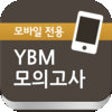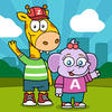Used Speech Sounds For Kids Lite - US Edition for iOS? Share your experience and help other users.
Developer’s Description
Used Speech Sounds For Kids Lite - US Edition for iOS? Share your experience and help other users.
Explore More

PedScripts
Free
Write Draw Free for iPad - Learning Writing, Drawing, Fill Color & Words
FreeKids ABC : Play & Learn
FreeCanadian Citizenship Test Prep 2016 - Free Mock CIC Exam with Practice Questions & Study Guide.
Free
YBM
Free
Zip and Abby: speaking the friendly language of math
Free
myFirst Fone
FreeCartoon100 - Top 100 Cartoons in TV History
PaidIELTS TestBank!
FreeGrace - Picture Exchange for Non-Verbal People
PaidBloxy World. 3D Blocks For Kids
Free
Twulshootseed Alphabet
Free